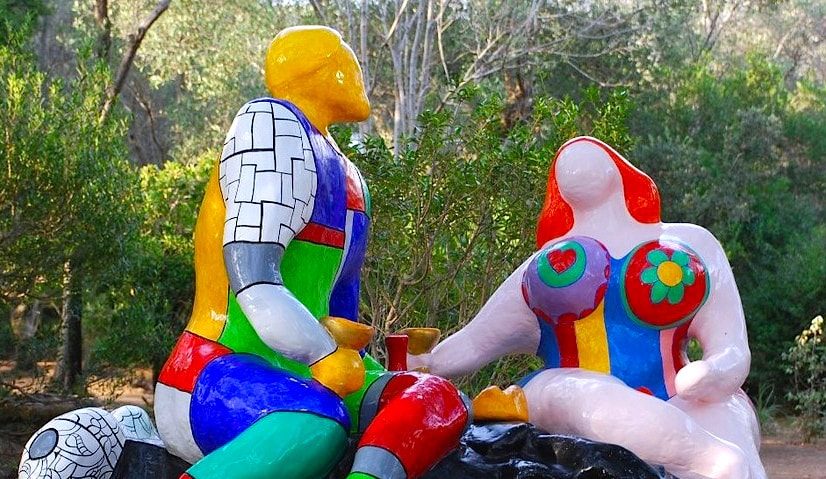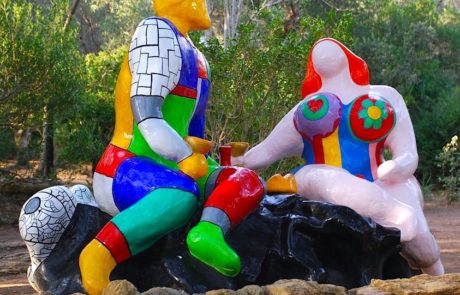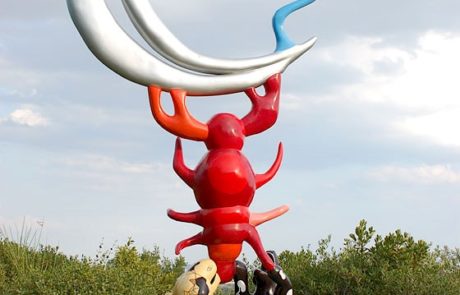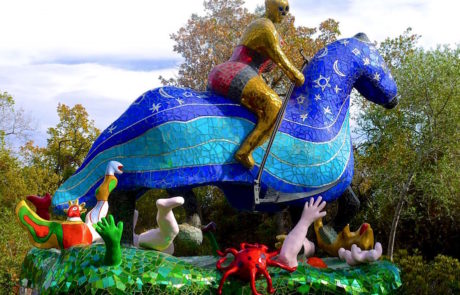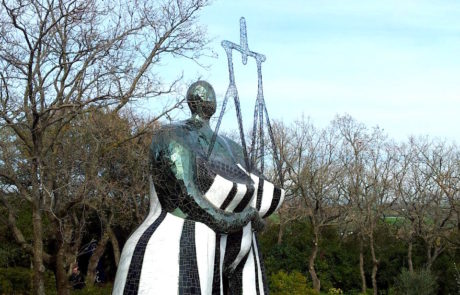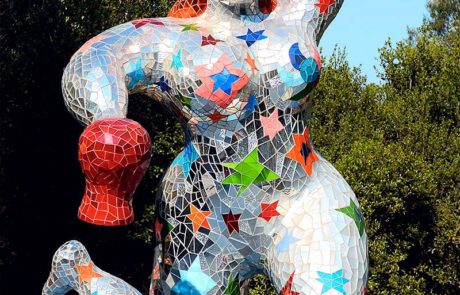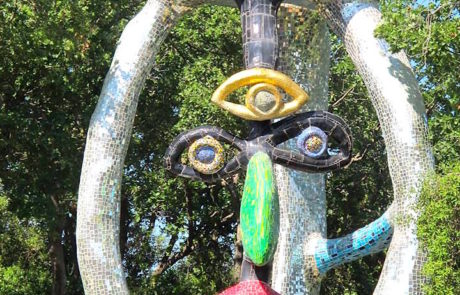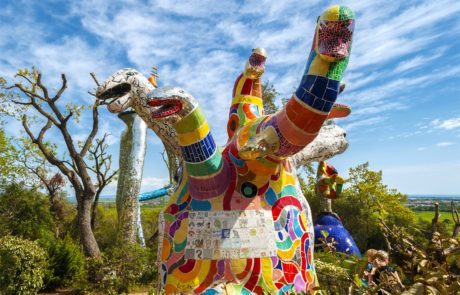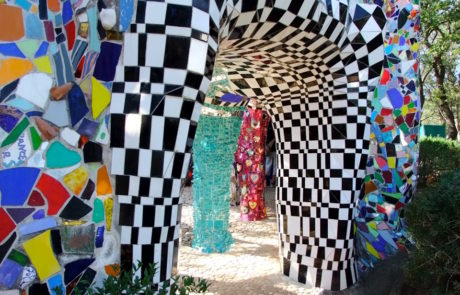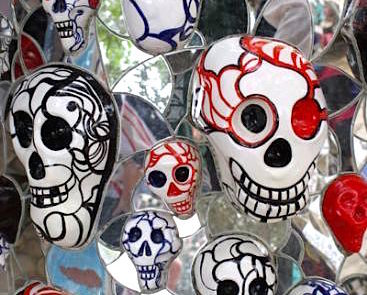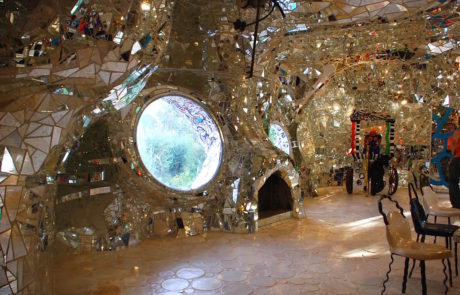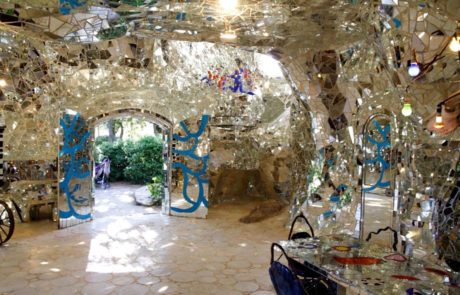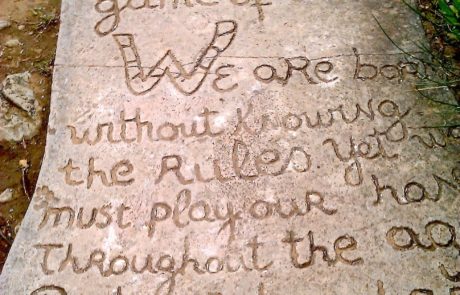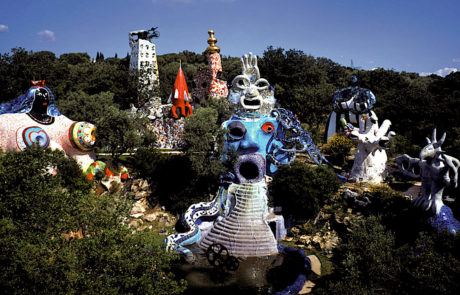It was a marvelously hot sunny day in mid-July in Capalbio. My boyfriend and I had just spent an amazing holiday in a retreat located in the Tuscan hills, swimming, drinking Spritz during the sunset and eating home-made raisin jam. That trip to The Tarot Garden was a surprise…
Capalbio is a small town with a little bit more than 4.000 souls close to Grosseto, in Tuscany. During the Renaissance they used to call it The Little Athens. Today it hosts one of the most amazing en plein air artistic sites in the world. The Tarot Garden is the glorious result of the union between Art, Nature and visionary thought. The creator, Niki de Saint Phalle, poured her whole professional and personal life into it, literally. She placed the “first stone” in 1979, after having been inspired by the Gaudi’s Parque Guell of Barcelona, visited few time before, and after having decided to dedicate to the incredible project all the necessary time: 17 years.
Before focusing on the Garden, it’s worth it to take a minute to describe Niki de Saint Phalle‘s life and personality. Born in France, she moved to New York with her family at the beginning of the 1930s to escape from the Great Depression, then to Spain and Paris, continuing to move until the mid 50s. She wasn’t for tradition; first she was dismissed from the Brearley School for painting red fig leaves on the school’s statuary, then she eloped at 18 with her first husband, Harry Mathews, to Massachusetts. Art entered her life as a form of therapy, giving solace from the bourgeois life, her new position of mother and wife (which was difficult for her to accept) and, as icing on the cake, from the trauma of having been raped by her own father at a young age. After having suffered from a nervous breakdown due to these experiences, she started traveling and moving until her death occurred in 2002 in San Diego.
The visionary project of the Tarot Garden left many people flabbergasted, often attracting insulting adjectives, like “crazy”, as she was called by some of her relatives. On the other hand many artists offered help and support, contributing to the garden with artworks and sculptures. Consequently, we can see the Tarot Garden as an embodiment of the different human experiences occurring in a lifetime. This is recognizable in each stone. Nikki de Saint Phalle’s project has been consonant with her creator’s vision from the beginning to the conclusion, and as I said for David Mithra, consonance is one of the most important elements for an artist.
Actually, the Tarot Garden can be also seen as the collective work of a unique artists’ equipe made up of, among the others, Rico Weber, Mario Botta, Ricardo Menon, Venera Finocchiaro and Jean Tinguely, the artist’s husband and master of the French Nouveau Expressionism. They married after the divorce from Mathews in the 60s, and like all the artist couples that you respect, their relationship wasn’t stable, but it was intense. They split up when he had a son with another woman, but they continued to collaborate as artists until the death of Tinguely occurred in 1991, five years before the conclusion of the Tarot Garden.
When I took my first step inside the Garden I could really feel the story behind it. I immediately realized that I stood in a living space; everything–stones, statues, colors, mirrors and mosaiques–oozed a powerful energy coming from faraway. Later I understood that the source of that power was the Love, the Dreams and the Pain that the artist experienced over there, and that she had taken care to record through the numerous statements on the walls and on the pathways.
The Tarot Garden follows a labyrinthine path representing the 12 tarots’ icons: The Tree of Life, the Emperor, the Empress/Sphinx, Death, The Devil, The World, Strength, The Hermit, The Lovers, the Broken Tower and so on. Each meaning manifests itself within the shapes of spaces and statues, the colors and the expressive forms of the images and symbols decorating the buildings and marking the pathways. “This garden has been realized with difficulties, with love, with crazy enthusiasm, with obsession and, most of all, with faith. Nothing and nobody could have stopped me. Like in any fable, along the way looking for the treasure I came across dragons, witches, wizards and in the end the Angel of Temperance”, Niki de Saint Phalle said.
Soon after taking the first steps on the path you come across the Empress/Sphinx, the most important sculpture-building of the Garden, and also one of the most fascinating. This building was the artist’s home during the whole developing of the ambitious project. She slept, ate, cried there, she lived moments of companionship with collaborators and family, and of profound loneliness. The “Great Mother”, as she called it, dominates the garden-city with its stature and its shining opulence. It’s entirely covered by colored ceramics outside and by tiny reflecting fragments of Venetian glass inside. To my eyes this is the castle of a princess who rules an eternal realm of stone subjects.
“To me it gives more satisfaction to do something good for others and for me instead of the need to have, HAVE, HAVE… more and more, more, MORE …”. This sentence, located at the entrance of the park, explains everything. The Tarot Garden is really a magic place created by the artist for herself, first of all, and secondly for others, and for posterity.
After she concluded the project in 1996, Niki De Saint Phalle founded the Tarot Garden Foundation to preserve her work at best, finally the doors opened to public in 1998. Nowadays there’s a limited number of visitors per day. Anyway Capalbio isn’t a touristic destination, and so this amazing place is still very little known by the Italian public; in fact if it won’t be the first place that foreigner tourists, and Italians themselves, will advise you to visit, it will be perhaps because they don’t know it. Well, now you know it.
